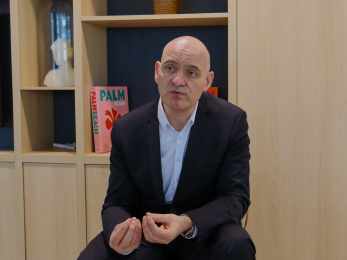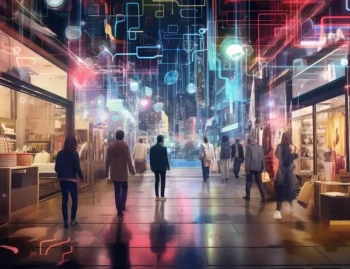Design Ops for the industrialization of your design processes
Design Ops, a contraction of the words Design and operational method, allows you to better design your products and helps you industrialize your processes. At JEMS, the Design team is very enthusiastic about it.
The objective of Design Ops is to propose solutions to the problems linked to the management of Design teams through a global reflection on tools and methodologies. The direct stakes of such an approach consist in improving communication and interdisciplinary collaboration while automating the value creation chain of services/products.
Design Ops can take the form of creating disruptive design processes, operating new software, and developing an organization’s deployment strategy. Let’s see together how it is beneficial for the industrialization of your design processes and how to lead this change!

Why industrialize your design processes?
In the collective imagination, industrialization and automation are synonymous with the loss of jobs and are therefore looked upon with suspicion. I Robot, Welcome to Gattaca, Ex Machina, …. There are countless science fiction films that reveal this fear born from the era of Chaplin and Modern Times. Although it is a reality, automation does not only destroy: it transforms our jobs and creates new ones.
The transformation of digital jobs is inevitable and can be frightening. Design Ops can become your best ally if you don’t want to undergo the necessary change, but rather accompany it by becoming an actor.
How does Design Ops address the need for automation?
The creation and management of Design Systems is the major solution that has emerged from Design Ops to promote industrialization in design. Indeed, Design Systems gather in a single tool all the design and information bricks necessary for the development of digital products. Moreover, they are accessible to both design and development teams.
In this way, they reinforce the connection and collaboration between these two teams while guaranteeing a minimum level of quality for the products delivered.
“The Design System carries the burden of the boring,
so that designers can get away from it.”
Josh Clark | Founder, Big Medium
Thanks to the automation provided by the operation of Design Systems, designers can invest the time saved on what matters most: the study of user needs and the creation of adapted paths.
Accepting change: a necessity for the integration of Design Ops.
System Design is changing the UI Designer’s job by transposing their role from creating interfaces to designing tools that allow them to quickly and efficiently generate digital products. This transformation is exacerbated by the emergence of NoCode in software and CMS.
Don’t worry, the industrialization of creation processes and artificial intelligence will never supplant the UX profession. On the contrary, they reinforce their role and their importance. However, they will have to adapt to integrate solutions such as Design Systems in their process.
The transformation of the business directly implies the modification of the creation and collaboration processes. To evaluate this, there is unfortunately no magic validation, but your operational design approach can be inspired by the numerous feedbacks shared. For example, the RATP reveals the new creation processes they have generated to accompany the integration of new tools like Figma.
How do we implement Design Ops at JEMS?
We approached this need for transformation through Design Thinking by conducting the reflection in project mode. First, we interviewed the employees of each department to identify the issues and needs related to the following initial question: How can we improve collaboration at JEMS by touching on the way we are, think or do things?
In a second step, after having audited our value creation processes, we studied the market trends in the form of a benchmark. In parallel, we also analyzed the results of reliable studies to compare the best practices of the market with those of JEMS. At the end of this step, we were able to identify a set of tools and methods to experiment with in project mode.
Today we are refining the operational design at JEMS through experimentation. The objective is to create a virtuous circle in which each employee is involved, in which each project forces us to improve our way of being, thinking and doing.

Arthur MATHON – Product Designer
References :
https://www.nexton-consulting.com/2021/04/28/le-design-ops-quest-ce-que-cest/
https://www.nngroup.com/articles/design-operations-101/
https://www.abstract.com/blog/designops-team
https://superfriendly.com/design-systems/articles/design-systems-pilots-scorecards/
https://www.invisionapp.com/inside-design/designops-handbook/





